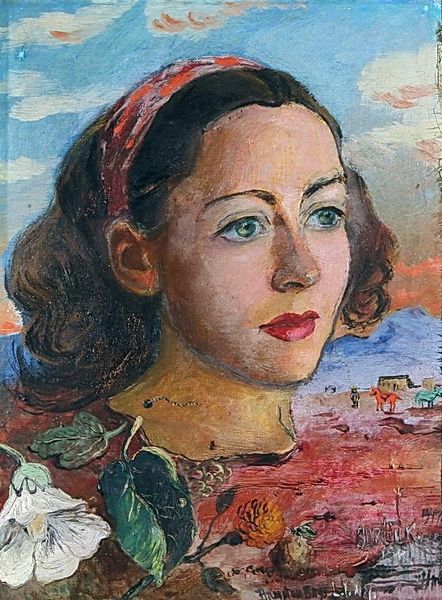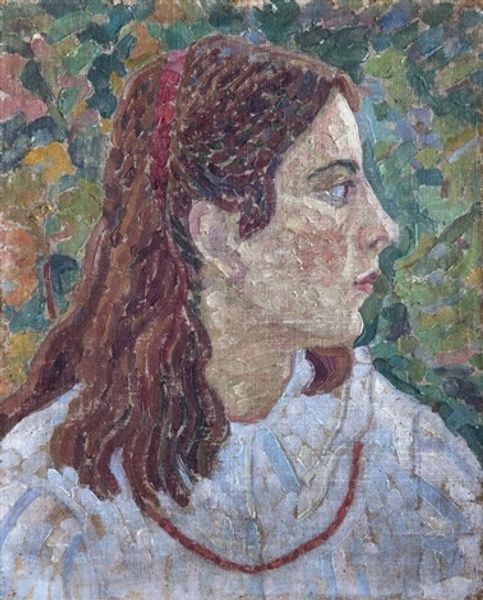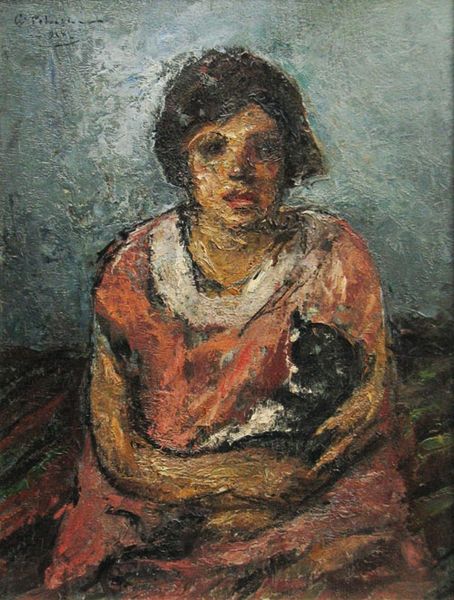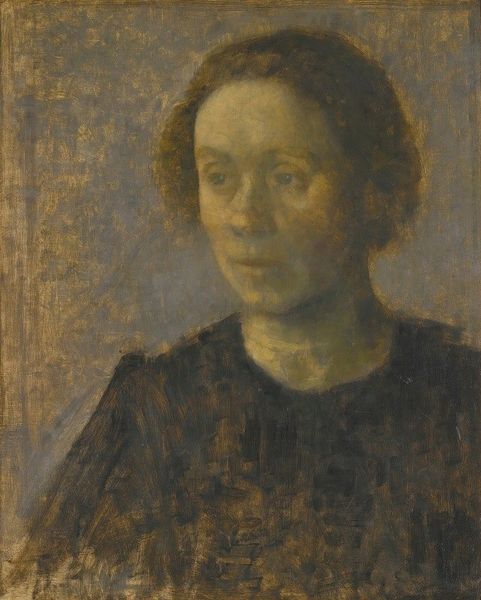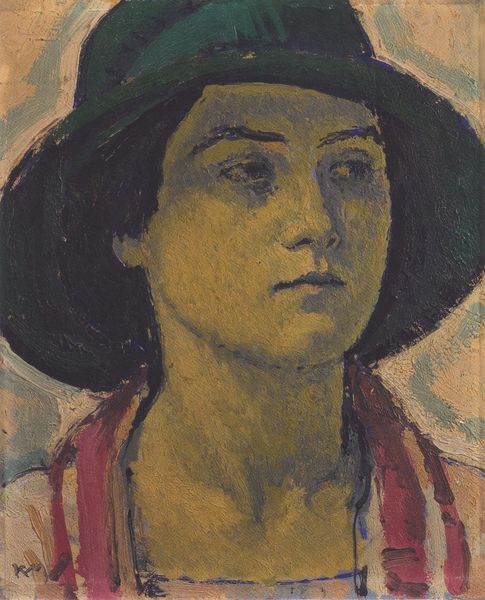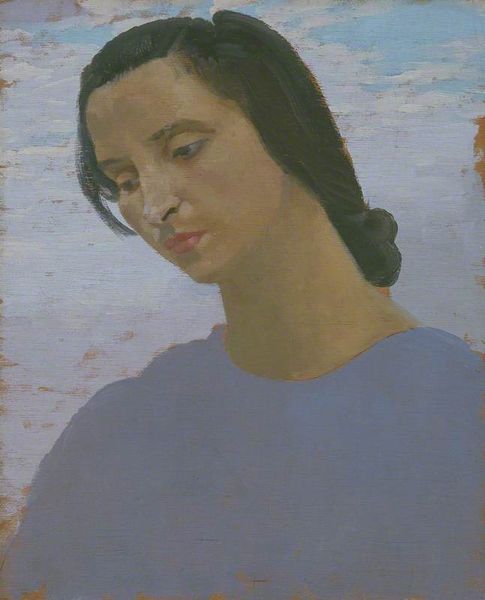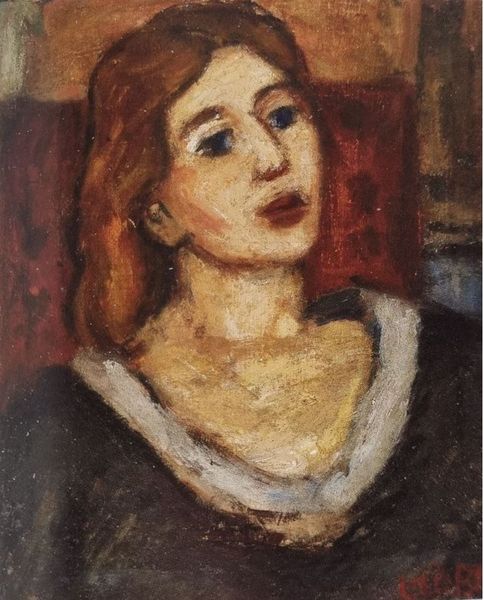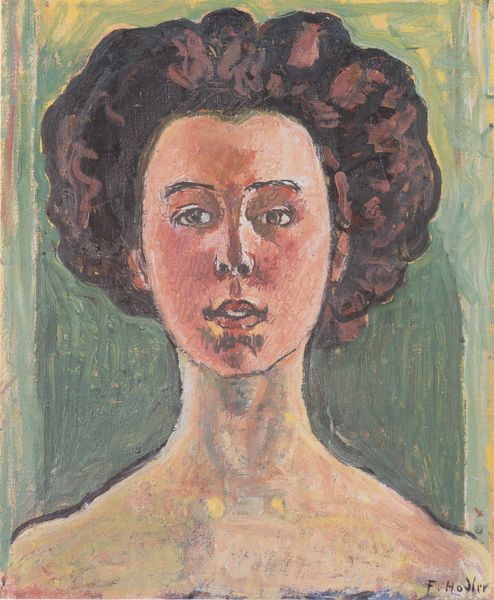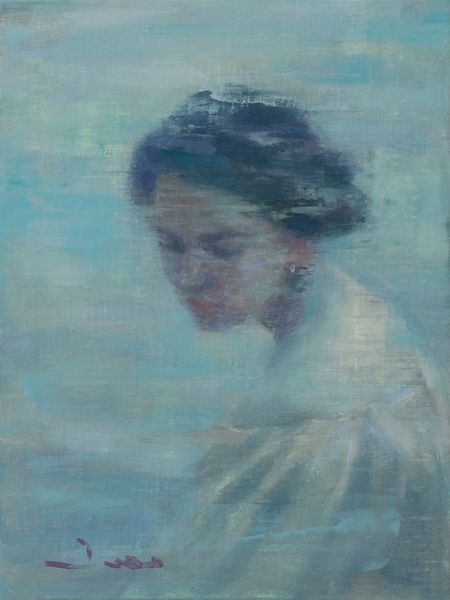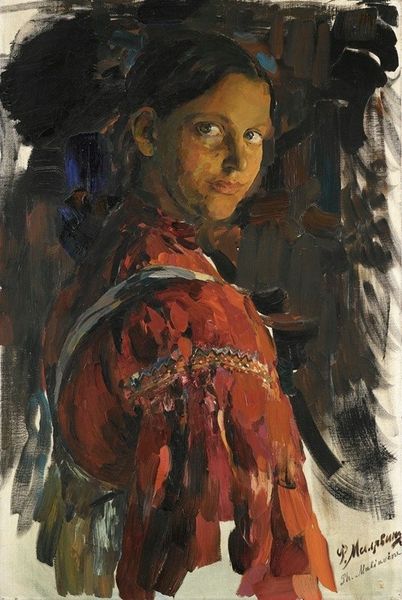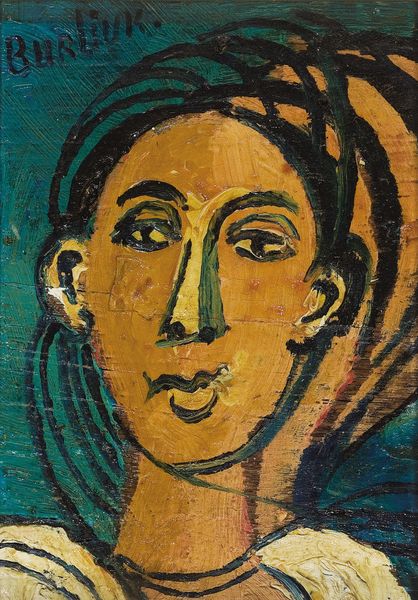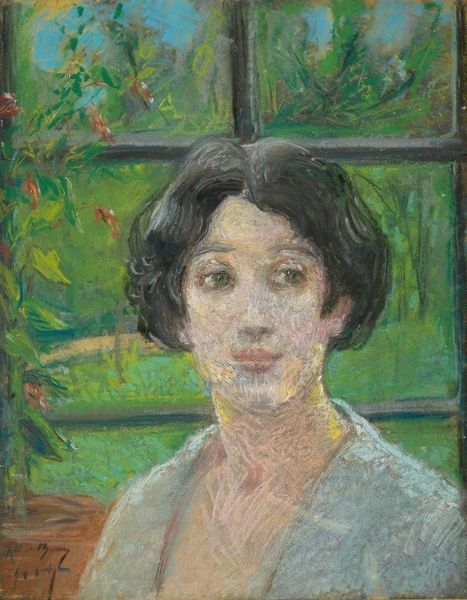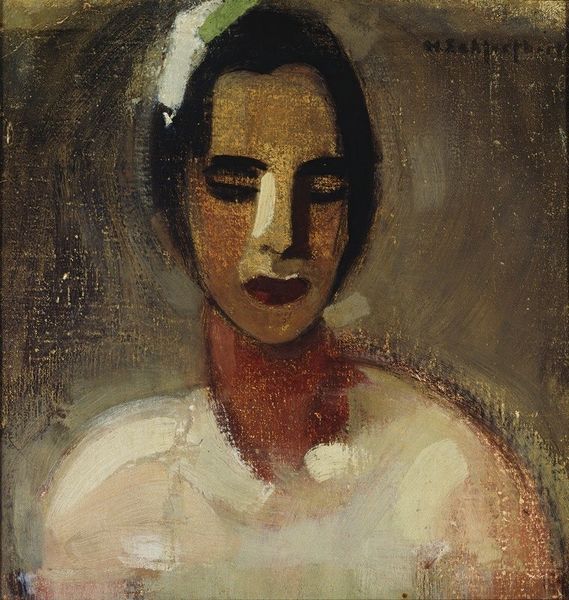
Copyright: David Burliuk,Fair Use
Editor: This is David Burliuk's "Portrait by the Castle under Moonlight," painted in 1951 using oil paint. It has such a dreamy, almost surreal quality to it. How do you interpret this work? Curator: What strikes me is the impasto technique, the sheer materiality of the oil paint, thickly layered, creating a palpable texture. Consider this: Burliuk was working in post-war Italy, a landscape of scarcity and reconstruction. Is there a connection between the physical density of the paint and the rebuilding of a society, brick by painstaking brick? Editor: That's fascinating! I hadn’t thought about it in terms of material scarcity and rebuilding. The impasto almost feels excessive, though. Curator: Precisely! Think of the availability, or lack thereof, of art supplies during that time. This thick application could be read as a commentary on waste and resourcefulness in artistic production. Was he making a statement by seemingly being lavish with paint? Editor: So, you're suggesting that the way Burliuk used his materials – almost aggressively, it seems – tells us something about the social and economic conditions of the time? Curator: Absolutely. And not just the *what* but the *how*. How did he acquire these materials? What was the cost? This informs our understanding of the artistic process itself. Editor: It's like the painting itself becomes evidence of a specific time and place and of available materials. Curator: Exactly. We can interpret the visible labor and resourcefulness inherent in this piece and its context to gain deeper knowledge and meaning from the painting. Editor: That’s a great way to consider the relationship between the artwork and how social circumstances leave a trace, I’ll be sure to include that. Thanks!
Comments
No comments
Be the first to comment and join the conversation on the ultimate creative platform.
